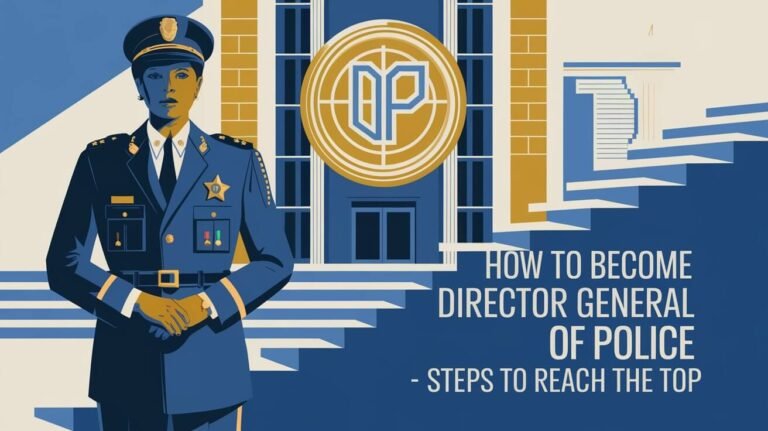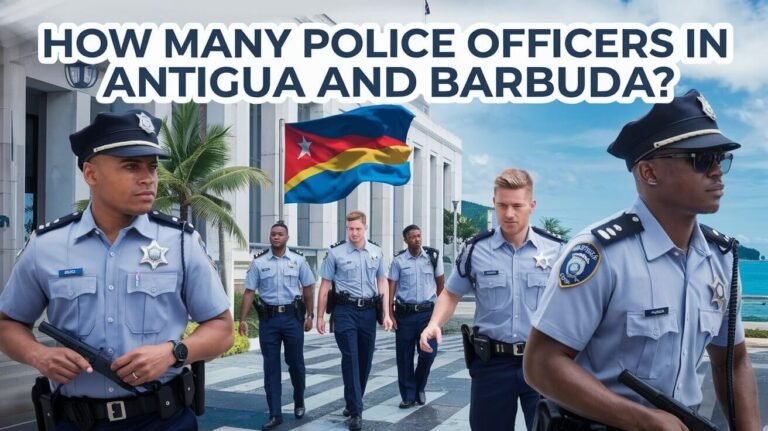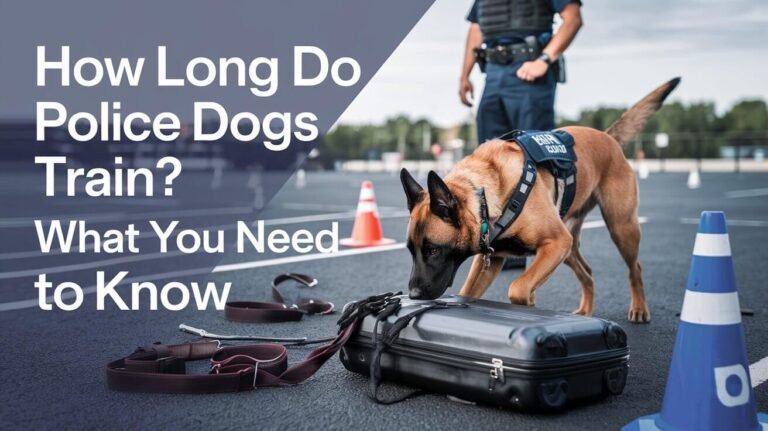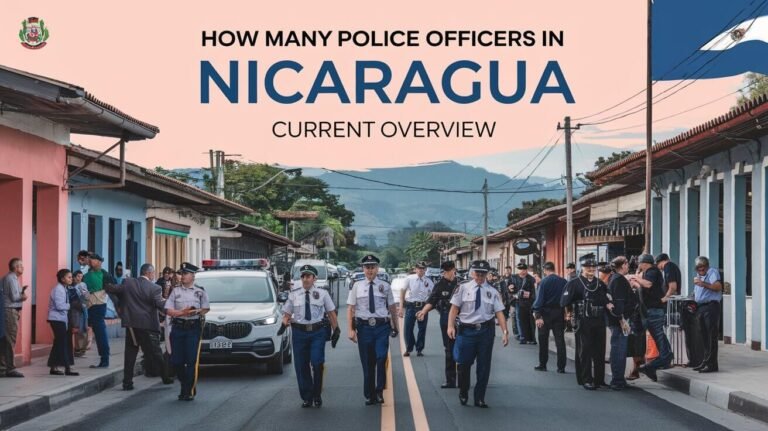Do Police Do Protection Kits For Minors In Minnesota?
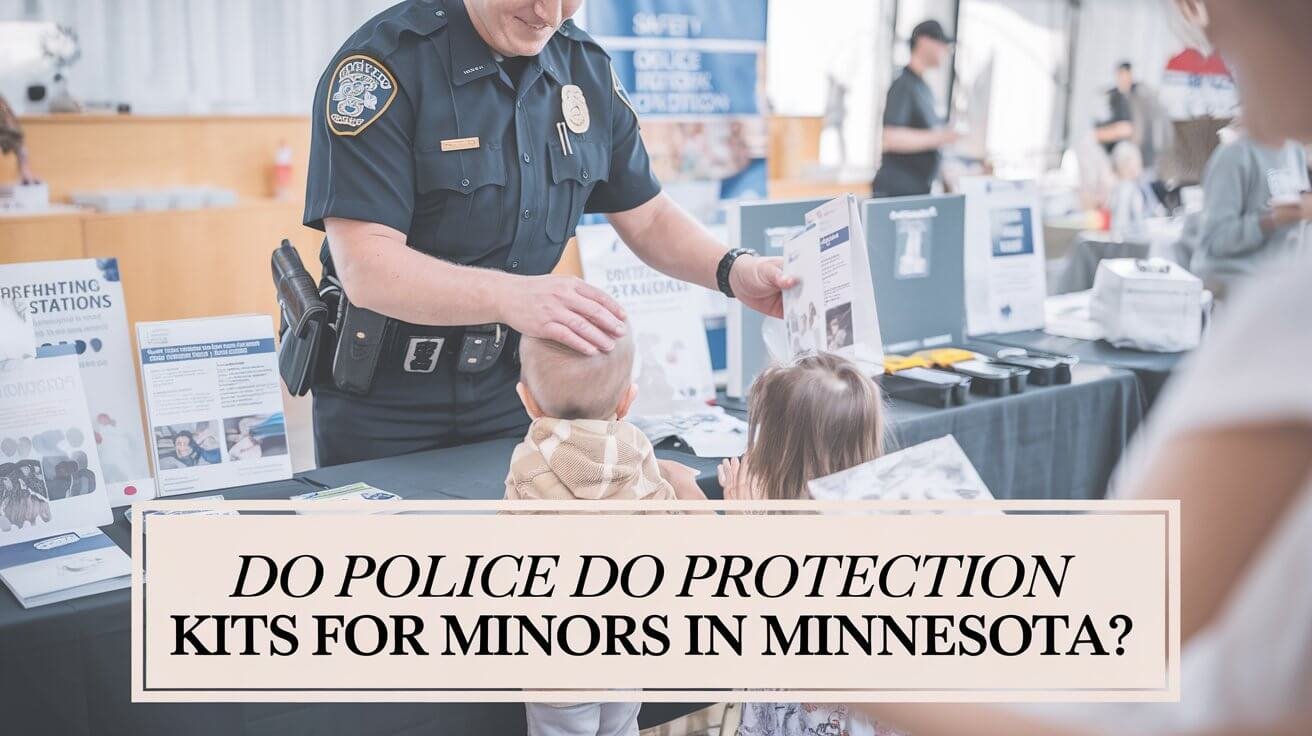
Every day, over 1000 kids go missing in the U.S. and Canada. This shows how important safety resources and programs are. In Minnesota, police offer protection kits for kids. These kits give families and caregivers a sense of security.
These kits help find children in emergencies. They are free for anyone who needs them. Inside, you’ll find vital details like blood type, eye color, and fingerprints.
The U.S. Department of Justice and Canada’s Government share important stats on missing kids. They highlight the need for these kits in Minnesota. Using these kits helps keep kids safe. They are a key part of protecting children in Minnesota.
Minnesota Police Protection Kit Components
The police protection kits in Minnesota aim to make minors feel safe and secure. These kits have important parts that help keep kids safe. They are made for kids who have gone through tough times or abuse.
The kits have tools for collecting DNA, which helps catch bad guys. They also have photo tools to record injuries or evidence. This is key in building a case against someone who has done wrong.
Key Components of the Kit
- DNA collection materials
- Photo documentation tools
- Personal information forms
Other items like swabs, gloves, and bags might be in the kits too. These help in collecting and keeping evidence safe. The personal info forms help gather details about the minor and their family. This info is useful for support and resources.
The kit’s parts are vital in dealing with minor trauma and abuse. They help ensure kids get the help they need to heal. Using DNA, photos, and personal info helps build a strong case against wrongdoers.
| Component | Description |
|---|---|
| DNA Collection Materials | Used to collect and preserve DNA evidence |
| Photo Documentation Tools | Used to document any injuries or evidence |
| Personal Information Forms | Used to collect information about the minor and their family |
Child Safety Programs Through Minnesota Law Enforcement
Minnesota law enforcement has many child safety programs. These programs help keep kids safe and sound. They include education, outreach, and support for families and caregivers.
The main goal is to stop and handle child abuse and neglect. These efforts are key to keeping kids safe in Minnesota.
Some important parts of these programs are:
- Education and outreach to teach about child safety and how to prevent abuse and neglect.
- Help and support for families and caregivers, like counseling and parenting classes.
- Working together with local child welfare agencies and law enforcement for a complete approach to child safety.
The 144-ENG 1-23 Minnesota Child Maltreatment Intake, Screening, and Response Path Guidelines set rules for handling child maltreatment. They focus on risk factors like child vulnerability and homeless youth. The guidelines also outline how to handle reports of non-current child maltreatment.
In 2009, Minnesota’s safety indicator showed about 96.03% of kids were safe from maltreatment. This shows how well child safety programs work in the state.
Do Police Do Protection Kits for Minors in Minnesota: Service Overview
Police protection kits in Minnesota help keep minors safe and secure. These kits are a big help for families and those taking care of kids. They cover who can get them, how much they cost, and where to find them.
These kits are for kids who live in Minnesota and are under 18. They are given out at police stations and community groups. The price and where to get them change based on where you are and what services you need.
Eligibility Requirements
To get a police protection kit, kids must meet some rules. They must live in Minnesota and be under 18. They also need to be in a situation where they might get hurt or taken advantage of.
Cost and Availability
The price of these kits varies. Some are free, while others cost a little bit. You can find them at police stations and community groups all over the state.
Distribution Locations
These kits are given out at many places, including:
- Law enforcement agencies
- Community organizations
- Schools
- Health clinics
These kits are a big deal for kids in Minnesota. They give them a feeling of safety. The details on who can get them, how much they cost, and where to find them make it easier for families and caregivers to get help.
| Location | Services Provided |
|---|---|
| Law Enforcement Agencies | Police protection kits, counseling, and support services |
| Community Organizations | Police protection kits, food, and clothing |
| Schools | Police protection kits, counseling, and educational resources |
| Health Clinics | Police protection kits, medical care, and health services |
Parent and Guardian Rights During Kit Processing
Parents and guardians have important rights during kit processing. These rights help them stay involved and support their children. They include knowing about the kit and helping with its use.
In Minnesota, the Rules of Juvenile Protection Procedure outline these rights. Parents and guardians must be told about the kit and its parts. They also get to help make decisions.
Some key rights for parents and guardians include:
- The right to be informed about the kit and its components
- The right to participate in the processing and distribution of the kit
- The right to request information about the kit and its components
- The right to participate in the decision-making process
It’s vital for parents and guardians to know their rights. This way, they can support their children better. Being involved helps kids get the help they need.
| Right | Description |
|---|---|
| Right to be informed | Parents and guardians have the right to be informed about the kit and its components |
| Right to participate | Parents and guardians have the right to participate in the processing and distribution of the kit |
| Right to request information | Parents and guardians have the right to request information about the kit and its components |
| Right to participate in decision-making | Parents and guardians have the right to participate in the decision-making process |
Minnesota Police Departments Providing Minor Protection Services
Minnesota police departments work hard to keep minors safe. They offer education, outreach, and support for families and caregivers. This ensures a secure environment for all.
Programs like D.A.R.E., National Night Out, and the Polar Bear Plunge are key. They foster police-community bonds, fight crime, and support Special Olympics Minnesota athletes.
Metro Area Locations
In the metro area, you’ll find many services for minors. These include:
- Education and outreach programs
- Resources and support for families and caregivers
- Partnerships with community organizations
Greater Minnesota Resources
Greater Minnesota also has a lot to offer. You can find:
- Law enforcement programs and services
- Community-based initiatives
- Support for rural areas
Tribal Law Enforcement Programs
Tribal law enforcement in Minnesota focuses on minor protection. They offer:
- Cultural sensitivity training
- Community-based programs
- Partnerships with tribal organizations
Minnesota police departments are dedicated to protecting minors. They work with families, caregivers, and organizations. Together, they aim to make a safer, more supportive place for all.
Protection Kit Documentation Procedures
The protection kit documentation procedures are set up to make sure kits are well-documented and processed. They cover collecting and keeping DNA evidence and documenting injuries or evidence. The aim is to create a detailed and correct record of the evidence. This record helps support investigations and prosecutions.
The steps for protection kit documentation include:
- Collecting DNA evidence, like hair, skin cells, or bodily fluids
- Keeping evidence safe, including how to store and handle it
- Recording injuries or other evidence, with photos and written descriptions
These steps are key to making sure protection kits work well. They help law enforcement agencies handle evidence right. This makes investigations thorough and accurate.
In Minnesota, these procedures follow state laws and rules. The state also offers training and resources. This helps law enforcement agencies know how to work with protection kits.
| Step | Description |
|---|---|
| 1. Collection of DNA evidence | Collecting hair, skin cells, or bodily fluids from the victim |
| 2. Preservation of evidence | Storing and handling evidence to prevent contamination or degradation |
| 3. Documentation of injuries or evidence | Photographing and describing injuries or other evidence |
Sticking to these procedures, law enforcement can make sure investigations are done right. This helps minors get the support and resources they need. These procedures are vital in responding to child maltreatment. They play a big role in protecting minors’ rights and well-being.
Minor Privacy Rights and Legal Safeguards
In Minnesota, keeping minors’ privacy safe is a big deal. The state has set up many rules to make sure their personal info stays private. These rules cover how data is handled, stored, and who can access it.
Some important rules for minors include the right to have a lawyer, safe places to stay, and the chance to work out deals. There are also programs to help fix problems that led to legal trouble.
Online sites in Minnesota must follow the Children’s Online Privacy Protection Act (COPPA). This law makes sure websites get permission from parents before collecting info from kids under 13. Key parts of COPPA include:
- Notice: Websites must clearly tell parents how they collect info.
- Parental consent: Websites need permission from parents to collect personal info from kids.
- Access to information: Parents can see and delete their child’s personal info.
| Provision | Description |
|---|---|
| Definition of personal information | Includes geolocation data, images, and voice recordings of children, and persistent identifiers. |
| Direct notice requirements | Operators must provide concise information to parents about their information collection practices. |
| Data security provisions | Operators must release children’s personal information only to secure service providers. |
Following these rules, minors in Minnesota can feel safe knowing their privacy is protected.
Emergency Response Protocols for Minor Protection
In emergency situations, minors need quick help and support to stay safe. Emergency response plans for minor protection aim to act fast and effectively. They cover how to respond to emergencies and offer resources for families and caregivers.
These plans are key to keeping minors safe in emergencies. For example, in Minnesota, people who must report abuse must do so within 24 hours. They also have to write a report within 72 hours. This shows how vital emergency response plans are for minors.
Some important parts of these plans include:
- Emergency drill procedures
- Reporting protocols
- Safe environment training programs
- Background checks for employees and volunteers
- Screening and training for employees and volunteers
Emergency response plans also might use emergency kits. These kits can have first aid supplies, emergency contact info, and flashlights. The goal is to have a complete and effective plan for emergencies, keeping minors safe.
| Emergency Response Protocol | Description |
|---|---|
| Emergency Drill Procedures | Regular drills to prepare for emergency situations |
| Reporting Protocols | Procedures for reporting instances of abuse or neglect |
| Safe Environment Training Programs | Training programs to prevent child sexual abuse |
With emergency response plans for minor protection, we can make sure minors get the help they need in emergencies. This way, we protect their safety and well-being.
Role of School Resource Officers in Kit Distribution
School resource officers are key in giving out police protection kits to kids. They teach and help families and caregivers. They need special training and good communication to do their job well.
They learn about laws that protect kids in Minnesota. This helps them know their duties. Good communication is also important for working with schools and families.
Some of their main jobs include:
- Teaching kids and their families
- Helping families with resources
- Talking with schools and families
- Making sure kits are given out right
The state puts a lot of money into school safety, like $47 million for the School Safety Center. School resource officers work with schools and families to keep kids safe. They make sure kids get the help they need.
| Program | Allocation |
|---|---|
| School Safety Center | $47 million |
| Homeland Security and Emergency Management Program | $57 million |
| Alcohol and Gambling Enforcement Program | $76 million |
| MN Firefighters Training and Education Program | $92 million |
Digital Safety Components in Protection Kits
Digital safety components are key in protection kits. They give minors online tools and resources for safety. These include education, outreach, and support for families and caregivers.
In today’s digital world, minors face many online dangers. Protection kits with digital safety tools help them stay safe. They offer the support and resources needed to navigate the internet.
Some important digital safety components in protection kits are:
- Online safety guides and tutorials
- Resources for reporting online abuse and harassment
- Tools for monitoring and controlling online activity
- Support services for families and caregivers
Law enforcement and organizations add digital safety components to protection kits. This helps minors have the tools to stay safe online. It’s a vital step in protecting them from online threats and creating a safe digital space.
Collaboration with Child Advocacy Centers
Child advocacy centers are key in helping kids who have been abused. Working with these centers is vital to ensure kids get the care they need. In Minnesota, these centers team up with law enforcement and other groups to help kids.
They offer counseling, therapy, and programs to help kids heal. Studies show that 97% of caregivers feel their kids are safe there. Also, 94% say they know what to expect after their first visit.
Support Services
Child advocacy centers provide many support services, including:
- Forensic interviewing
- Medical evaluations
- Victim advocacy
- Mental health services
- Community education and outreach
Follow-up Programs
Follow-up programs are a big part of their services. They help kids keep getting the support they need. By working together, law enforcement and other groups can give kids the care and protection they deserve.
| Service | Percentage of Caregivers |
|---|---|
| Feel safe at child advocacy centers | 97% |
| Know what to expect at the end of their first visit | 94% |
| Would recommend child advocacy center services to others | 97% |
In Conclusion
The police protection kits for minors in Minnesota are more than just tools. They show a deep commitment to keeping the vulnerable safe. These kits, given out by police and community groups, give kids a sense of security. They are key in stopping and handling child abuse and neglect.
These kits include important documents and digital safety tools. They also work with child advocacy centers. This means Minnesota’s kids get the help they need to do well. By supporting these programs, Minnesota shows it cares about its young people’s safety and well-being.
The future looks bright for Minnesota’s efforts to protect its kids. The kits will keep being a big help. With training for school officers, new digital safety steps, and stronger community ties, they’ll fight child abuse and neglect even harder.
In short, the police protection kits for minors in Minnesota show the state’s strong dedication to its most vulnerable. With these resources, families and caregivers can feel confident their kids are safe and supported. This leads to a brighter, safer future for everyone in Minnesota.
Answering Your Queries
What are the components of the police protection kits for minors in Minnesota?
The kits in Minnesota have DNA collection tools, photo tools, and personal info forms. They help minors feel safe and secure.
What child safety programs are offered through Minnesota law enforcement?
Minnesota law enforcement has many child safety programs. They include education, outreach, and support for families. These programs help prevent and respond to child abuse.
What are the eligibility requirements, cost, and availability of the police protection kits in Minnesota?
The kits are for eligible minors in Minnesota. Costs and availability vary by location. You can get them at law enforcement and community organizations.
What rights do parents and guardians have during the kit processing?
Parents and guardians have rights during kit processing. They must be informed and can participate. This ensures they support their minors well.
What minor protection services are offered by Minnesota police departments?
Minnesota police offer many services for minors. This includes education, outreach, and support for families. You can find these services in many places, including metro areas and tribal programs.
What are the documentation procedures for the police protection kits?
The kits have specific documentation procedures. This includes DNA evidence collection and injury documentation. It ensures the kits are processed correctly.
What are the minor privacy rights and legal safeguards in place?
Minnesota protects minors’ privacy with legal safeguards. This includes data protection and access restrictions. It keeps their information safe.
What are the emergency response protocols for minor protection?
Minnesota has emergency response plans for minors. These plans ensure minors get support in emergencies. They include procedures and resources for families.
What is the role of school resource officers in the distribution of the police protection kits?
School resource officers are key in distributing the kits. They provide education and support. They must be trained and have good communication to distribute the kits effectively.
What are the digital safety components included in the protection kits?
The kits include digital safety tools for minors. They offer online education and support. This helps minors stay safe online.
How does the collaboration with child advocacy centers work in providing support and resources?
Child advocacy centers work with law enforcement to support minors. They offer counseling and follow-up programs. This ensures minors get the help they need.

